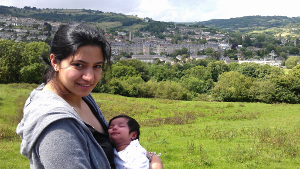So Miguael de Icaza posted a blog with his opinion about why Desktop Linux has not become a huge success. The core of his argument seems to be that the lack of ABI stability was the main reason we didn’t get a significant market share in the desktop market. Personally I think this argument doesn’t hold water at all and the comparison with MacOS X a bit random.
So I think there are a lot of contributing factors to our struggle in the desktop market like:
- We are trying to compete with a near monopoly (Windows)
- Companies tend to depend on a myriad of applications to run their business, and just a couple of them not running under Linux
would be enough to derail a transition to Linux desktops - We were competing not only with other operating systems, but with a Office productivity application monopoly
- We are trying to compete by supporting an unlimited range of hardware options
- We divided our efforts into multiple competing APIs (GNOME vs KDE)
- There was never a clear method of distributing software on Linux outside the distro specific package system.
- Many of our underlaying systems were a bit immature
- Software patents on multimedia codecs made it hard to create a good out of the box experience for multimedia
- Competing with free applications is never a tempting proposition for 3rd party vendors
- We never reached a critical mass where porting to desktop Linux tended to make sense
- An impression was created that Linux users would not pay for any software
- The different update cycles of the distributions made it hard to know when a new API would be available ‘everywhere’
- Success in other areas drained resources away from the desktop
The Apple Myth
So how did Apple succeed? Well first of all the question needs to be asked if they have succeeded? When Steve Jobs came back to Apple I think their global market share for personal computers was down to just below 5% if my memory serves me correct. According to Wikipedia (not the best proof of anything, but lets assume they are in the ballpark) their marketshare is now about 7.5%. So in other words on the back of being the media darling and record breaking products such as the iPod, iPhone and iPad, they have managed to increase their market share with 2.5% in the PC market. I think that speaks volumes about the challenges posted by the first two items in my list above. Another thing that is both an advantage for Apple and a disadvantage at the same time is that they got their own hardware. In the advantage collumn that means that their developers had a very limited set of hardware configurations to support and they could ensure MacOS X ran well on that configuration. We on the other hand have been struggling with trying to support basically any random configuration out there, which means ensuring a problem free experience for everyone is next to impossible. Of course I think only supporting your own hardware also does sometimes makes things harder for Apple, because if a company was considering switching to MacOS X they would have to throw away all their existing hardware, which I am sure makes a lot of companies think twice if contemplating switching.
Apple were also able to build on their old market share when launching MacOS X, which means they have had a profitable ecosystem all the way. So for instance porting games has provided enough income to support companies in keep doing so. While for Linux it has often been a proposition of trying to build a market when considering porting to Linux.
Conclusions
So I could go intro great detail for each of my bullet points, but I think they are quite self explanatory. But my general point is that I when I ask myself if I think our market share would be significantly higher if our ABI stability had been even better, the answer is no. Not that I am saying I think it has had no impact at all, I am sure examples exist of ABI breakage or distro fragmentation having caused 3rd party software developers to shy away, but I don’t really believe Linux would have had for instance a 10% marketshare today if only our ABI stability had been better over the last 10 years. But maybe it would have added another 0.2% or something in that range.
But as I said in an earlier blog post, I am not negative about the future of Linux and open source on the desktop. I just think it is a lot slower slog to get there than we hoped for, and I do honestly feel that we have a much more compelling product to offer today than we did 10 years ago in comparison with Windows and MS Office. But the challenges in my bullet point list remain and overcoming them has been and will continue to be something we have to chip away at, one step at a time. And in the meantime linux and open source software is still doing extremely well in a lot of other end user facing market segments where the competition was not so strongly entrenched, like mobile phones, tablets, TVs, set top boxes, in-flight entertainment systems, in-vehicle entertainment systems, home applicances and so on.







